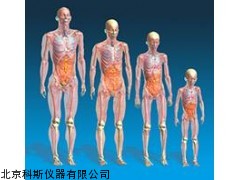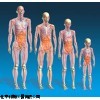| 提交询价信息 |
| 发布紧急求购 |




价格:电议
所在地:北京
型号:三维人体组织医学仿真软件平台Sim4Life
更新时间:2023-10-27
浏览次数:5081
公司地址:北京经济技术开发区荣华南路16号中冀斯巴鲁大厦1504
![]()
程先生(先生)
三维人体组织医学仿真软件平台Sim4Life运作流程可分成MRI/CT 3D影像重建、解剖及产品模型导入(CAD)、多样化解算器、组织和物理模型、直观的分析报告及硬体验证等阶段,能够在取得多张影像资料之后,快速进行完整3D三维影像重建,再利用內建产品模型,产生接近真实狀況的模擬资料。而且产品本身支持市面上常見的模型软件,包含各种公开的人体解剖模型,能够符合不同医疗环境的使用需求。
三维人体组织医学仿真软件平台Sim4Life可掌握病情狀況,实现客制化医疗诉求,能够根据个体的差异,採取术前科学規划、术中定位、术后准确评估。Sim4Life平台采用互动式动态建模方式,简单易用的下拉式建模工具列,不仅便于输入医疗设备产生的各种影像档,而只需利用滑鼠即可做视角缩放变换,轻松完成全人体三维模型,順利完成适宜的治疗方案規划。Sim4Life平台具备易于编写的特性,加上拥有线上強大资料库,用戶很容易产生适合自身医疗环境的工具库,也能即時調整平台的操作环境。所以软件推出至今,已許多客戶以此平台再创建了许多延伸应用,如MRI线圈设计、造影解析度改量、人体模型开发等等,堪称是打造客制化医疗的工具。
Sim4Life平台使得个性化医疗将不再是遙不可及的梦想,亦能降低医疗机械研究的成本,並符合各国法規的要求。特別是當医疗团队能够收集到更多资訊,为病人制訂專屬客制化医疗之后,不仅能創造出更好医疗效果,也能准确后续預測治疗結果,減少病患术后感染或藥物过敏的医疗纠纷,进而让寶貴医疗资源获得利用。當客制化医疗能够逐步被实踐之后,立法机关也能制定一套更完善的治疗准則,对提升医疗照护品质与水准。在医疗观念不断提升之下,建构一套完善的健康管理平台,已成为現代医疗医学的新趋势。
一般來说,健康管理平台上收集到的资料有兩大用途,先是作为医生治疗前的评估參考,如用药种类或是手术形式,其次則是将病历资料转换为更容易阅读的可视化图像。医院或研究单位若能够将前述两类资料,输入到多重物理模擬软件Sim4Life時,則有助于新医疗技术开发,进而为特定疾病研发出更有效的药物或治疗工具。
In silico
The digital revolution is extending the frontiers of medicine and medical technology. Computer modeling and simulation (CM&S), or in silico technologies, merge computational tools with biology to intuitively, precisely, and reproducibly perform complex analyses of life sciences applications. With this emerging paradigm, experimental manipulations that are infeasible or impossible to conduct in real-life experiments can be created while maintaining experimental control: the perfect complement to in vivo and in vitro studies.
ZMT provides in silico solutions to the medical device industry. Our comprehensive simulation platform, Sim4Life, provides a powerful 3D validated biological and anatomical modeling environment for optimizing the effectiveness and performance of medical devices, improving patient safety, and discovering potential new treatments. Built from the ground up, Sim4Life provides smooth and fully automated or customizable workflows for applications ranging from exploratory research and medical device development to regulatory documentation for clinical trials and device certification.
we trust
Our software tools are thoroughly and continually verified to ensure their reliability and performance requirements as they evolve.
The same effort is on validation for our expanding portfolio of targeted life sciences models and applications.
ZMT also provides test systems for validation procedures that support complex requirements with software tools optimized for test and measurement systems.
At ZMT, we leverage the combined strength of our expertise, experience, cost-effective solutions, and commitment to long and fruitful client relationships to enhance your competitive advantage during the regulatory submission process.
| Phantoms |
Solvers & Tissue Models |
Validation Hardware |
Sim4Life
Sim4Life is the first computational life sciences platform integrating computable human phantoms with the most powerful physics solvers and the most advanced tissue models for directly analyzing biological real-world phenomena and complex technical devices in a 3D validated biological and anatomical environment.

All modeling capabilities from the segmentation of medical image data, anatomical and CAD model import, discretization and simulation to visualization and analysis are embedded and streamlined to offer the most versatile and efficient simulation environment possible.
At the core of Sim4Life are the computable, high-fidelity 3D Virtual Population (ViP) human anatomical models. Carefully selected to fully represent global variations in human anatomy, the fully posable, morphable, and validated ViP models along with the IT'IS tissue properties database depict 15 different body types with 120 vital anatomical features and over 300 precisely identified tissues and organs. Cited and applied in hundreds of published studies and papers, the ViP models and the IT'IS material parameter database are continually and meticulously updated, refined, and expanded.

Sim4Life is a revolutionary simulation platform, combining computable human phantoms with the most powerful physics solvers and the most advanced tissue models, for directly analyzing biological real-world phenomena and complex technical devices in a validated biological and anatomical environment. The Sim4Life platform also offers leading performance with all the features expected from a multiphysics CAE/TCAD platform. Watch the Sim4Life demo video!
| Computable Human Phantoms |
Physics Solvers |
 |
 |
| Sim4Life natively supports the Virtual Population ViP 3.0 models that include integrated posing and morphing tools. Other publicly available animal and human anatomical models are also supported. All tissues are linked to a continually updated physical properties database. |
The powerful Sim4Life solvers are specifically developed for computationally complex problems; HPC accelerated for the latest computer clusters; and smoothly integrated in the most advanced coupling framework. The platform already includes EM, Thermal Acoustic, and Flow solvers. |
|
Tissue Models |
framework |
 |
 |
|
The integrated tissue models enable the modeling and analysis ofphysiological processes. Perfusion models, tissue damage models, and neuronal models are already included in the first release of Sim4Life. |
The Sim4Life framework efficiently facilitates all steps in complex multiphysics modeling, from defining the problem, discretizing, simulating, and analyzing to visualizing the results, with clarity and flexibility. |
Sim4Life Platform 三维人体组织医学仿真软件平台Sim4Life组成
Computable Human Phantoms可计算人类仿真软件 |
Physics Models物理模型 |
Tissue Models组织模型 |
Intuitive GUI and Workflow直观图形用户界面及集成平台 |
Licensed Modules可授权模块 |
ViP 3.0Virtual Population |
P-EM-FDTDElectromagnetics Full Wave Solvers |
T-NEURONeuronal Tissue Models |
iSEGMedical Image Segmentation Tool Set |
MRIM-MUSAIK M-TxCOIL M-BCAGE M-SYSSIM M-GRAD M-IMSAFE |
ViA 1.0Animal Models |
P-EM-QSQuasi-Static Electromagnetics Solvers |
T-CEM43Tissue Damage Models |
MODELERAdvanced Modeling Tool Set |
|
|
Third-Party Models |
P-THERMALThermodynamics Solvers |
T-FLOWRATESFlow Rate Computational Engine |
MESHERRobust & Effective Meshing |
MODELINGM-REMESH M-POSER |
|
|
P-FLOWFluid Dynamics Solvers |
ANALYZERVersatile Postprocessor and Analyzing Tool Set |
CALCULATORSM-DISPFIT M-PPCALC |
|
|
|
P-ACOUSTICSAcoustics Solvers |
|
PYTHONControl via Python scripting |
PROCESSINGM-MATCH M-TALATLAS M-MBSAR M-PHARRAY |
|
|
P-CRDConvection Reaction Diffusion Solvers (coming soon) |
|
|
|
|
|
P-MECHMechanical Solvers(coming soon) |
|
|
importM-HUYGENS M-IMG M-VOX |
|
|
High Performance Computing Auto-Scheduler & Control ARES |
|
||
At the core of Sim4Life is a comprehensive set of computable human phan0[toms empowered by the most powerful physics solvers and the most advanced tissue models, providing a realistic biological and anatomical;] environment for conducting fundamental mechanistic studies, testing the effectiveness and safety of medical devices and treatments, and supplementing clinical trials. Based on the Virtual
Population ViP3.0 models of the IT’IS Foundation at ETHZ, the computable phantoms are characterized to predict real-world biological and physiological phenomena for any defined patient population. All tissues are linked to a continually updated physical properties database.
 |
The powerful Sim4Life meshers allow high fidelity discretization of the complex computable human phantoms combined with any implant or external device. A complementary interactive morpher extends the demographic coverage of the parameterized anatomical models, e.g., to explore underrepresented or pathological anatomies in clinical trials. A flexible poser is also included with the models. Physicians and biologists rigorously validate the models and the associated database. Comprehensive documentation for all natively supported computable human phantoms is available. |
Key Features
|
Native support for the latest generation of the Virtual Population ViP3.0 Largest library of 3D high resolution CAD-based phantoms available on the market Grid-independent (not based on voxel data), CAD-based anatomical phantom data More than 15 full body anatomical human phantoms More than 10 anatomical head models (children, *****, male, female, European, Asian) |
 |
|
Large high-resolution CAD animal models (or voxels via Brooks AF Base voxel data) More than 10 small animal models (rat, mouse, young, *****, male, female, pregnant, etc.) High resolution head model with integrated detailed deep brain structures and anisotropy information Integrated generation of high quality surface models from voxel and image data |
 |
|
Posable anatomical models and support for the parameterization of additional models Interactive model morphing tool Generic birdcage CAD models Validated standard and measurement phantoms (e.g., SAM V4.5, Eli, CTIA/hands, DASY phantoms, etc.) |
 |
Physics Models 物理模型
P-EM-FDTD :Electromagnetics Full Wave Solvers电磁全波段解算程序
The Electromagnetics Full Wave Solvers (P-EM-FDTD) enable accelerated full-wave, large-scale EM modeling (> billion voxels) using Yee discretization on geometrically adaptive, inhomogeneous, rectilinear meshes with conformal sub-cell correction and thin layer models, offering support for dispersive materials. The solvers also include many unique features for EM safety assessments (see IMSAFE).
Optimal simulation speed is achieved with native GPU and MPI accelerations, which were developed by our team that first introduced EM accelerated solvers together with Acceleware in 2006.
The unique bidirectional Huygens box approach overcomes the difficulties associated with models that extend across multiple scales and require strongly varying resolutions.
As the most frequently applied solvers in near-field dosimetry, they have been extensively validated and documented according to the IEEE/IEC 62704-1 standard as well as by comparisons with measured data (> 200 publications). Comprehensive documentation is available for Sim4Life.
P-EM-QS:Quasi-Static EM Solvers 准静态电磁解算程序
The Quasi-Static Electromagnetic Solvers (P-EM-QS) enable the efficient modeling of static and quasi-static EM regimes by applying the finite element method on graded voxel meshes. The solvers address the most challenging low frequency problems at the cutting edge of medical and EM compliance applications, e.g., simulations of EEG, MRI gradient coil fields, transcranial magnetic or current stimulation, and deep brain and spinal cord stimulator implants.
Each solver is optimized for a different approximation of Maxwell’s equations, offering improved speed, convergence, and accuracy for a wide range of scenarios.
Measured data and user-defined field or current distributions can be used as sources.
The P-EM-QS solvers have been validated and the uncertainties have been quantified using analytical and full-wave solutions and by comparison with measurement data. Comprehensive documentation is available for Sim4Life.
P-THERMAL:Thermodynamics Solvers 热力学解算程序
The Thermodynamic Solvers (P-THERMAL) enable the modeling of heat transfer in living tissue using advanced perfusion and thermoregulation models. The two solvers adapted from SEMCAD X are based on 1) the finite-difference time-domain solver with conformal surface correction and 2) a steady-state finite volume solver to support adaptive rectilinear meshes and arbitrary active domain shapes.
The solvers allow for the coupled simulation of local vascular effects using discrete networks (1D trees) and, in the near future, CFD results.
Exclusive thermal damage and effect quantification models, e.g., T-CEM43, are included.
The P-THERMAL solvers have been extensively validated by comparison with analytically solvable cases, experimental measurements under controlled conditions, and in vivo measurements. Comprehensive documentation is available for Sim4Life.
P-FLOW:Fluid Dynamics Solvers 流体动力学解算程序
The high performance computing enabled Fluid Dynamics Solvers (P-FLOW) facilitate the modeling of realistic physiological and pathological biofluidic scenarios in the presence and absence of vascular implants. The stationary and transient Navier-Stokes and Stokes equations are efficiently solved in parallel using a Schur-complement-preconditioned finite element method with runtime solver monitoring, advanced convergence criteria, adaptive time-stepping, tunable stabilization, and optional nondimensionalization. Watch the demo video!
The P-FLOW solvers feature a unique solution to model strongly-coupled fluid-structure interaction problems for medtech applications, e.g., for pulsating vasculature modeling. (coming soon)
Specialized boundary conditions for realistic blood flow modeling (e.g., developed flow) and initial conditions based on measured image data can be applied.
The solvers are comprehensively and continually validated by comparison with analytical solutions for selected problems, benchmark problems, and measurement data. Comprehensive documentation is available for Sim4Life.
The two full wave Acoustics Solvers (P-ACOUSTICS) encompass 1) a GPU and OpenMP accelerated non-linear FDTD method with an extended Westervelt-Lighthill equation applied to adaptive rectilinear meshes with inhomogeneous PML boundary conditions and 2) a fast near-field method combined with the hybrid angular spectrum approach (FNM-CHASM) to simulate complex wave propagation inside inhomogeneous tissue distributions and to rapidly calculate pressure distributions for applications such as focused ultrasound treatments. This is state-of-art in computational acoustics.
The novel ultrasound solvers account for pressure wave propagation, density variations and jumps, non-linearity, and diffusivity losses that occur in human tissue.
The FNM-CHASM solver offers near real-time simulations of acoustic propagation in inhomogeneous setups.
The P-ACOUSTICS solvers have been extensively validated and the associated uncertainties have been quantified using analytical solutions, benchmarks, and robotic 3D-scan hydrophone measurements in complex setups. Comprehensive documentation is available for Sim4Life.
Tissue Models 组织模型
T-NEURO :Neuronal Tissue Models 神经组织三维模型
The Neuronal Tissue Models (T-NEURO) enable the dynamic modeling of EM-induced neuronal activation, inhibition, and synchronization using either complex, multi-compartmental representations of axons, neurons, and neuronal networks with varying channel dynamics, or generic models. The solvers are ideal for studying interaction mechanisms, evaluating and optimizing neurostimulating devices, and assessing safety issues. Embedded geometrical and dynamical representation of neurons (soma, axon, and dendritic tree) generate physiologically functionalized anatomical models. (coming soon)
 免责声明:以上所展示的[三维人体组织医学仿真软件平台Sim4Life 三维人体组织医学仿真软件平台Sim4Life]信息由会员[北京科斯仪器有限公司]自行提供,内容的真实性、准确性和合法性由发布会员负责。
免责声明:以上所展示的[三维人体组织医学仿真软件平台Sim4Life 三维人体组织医学仿真软件平台Sim4Life]信息由会员[北京科斯仪器有限公司]自行提供,内容的真实性、准确性和合法性由发布会员负责。